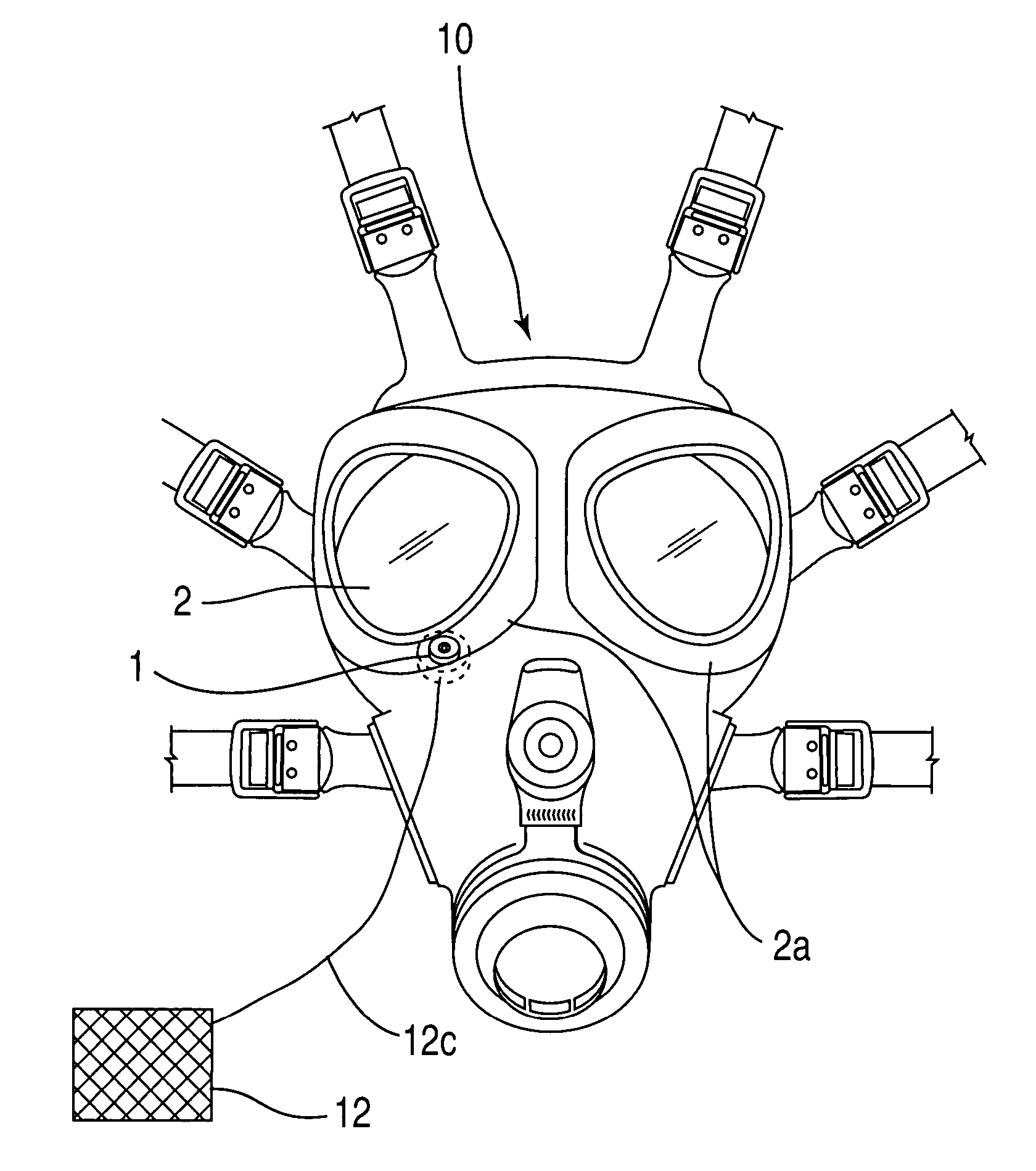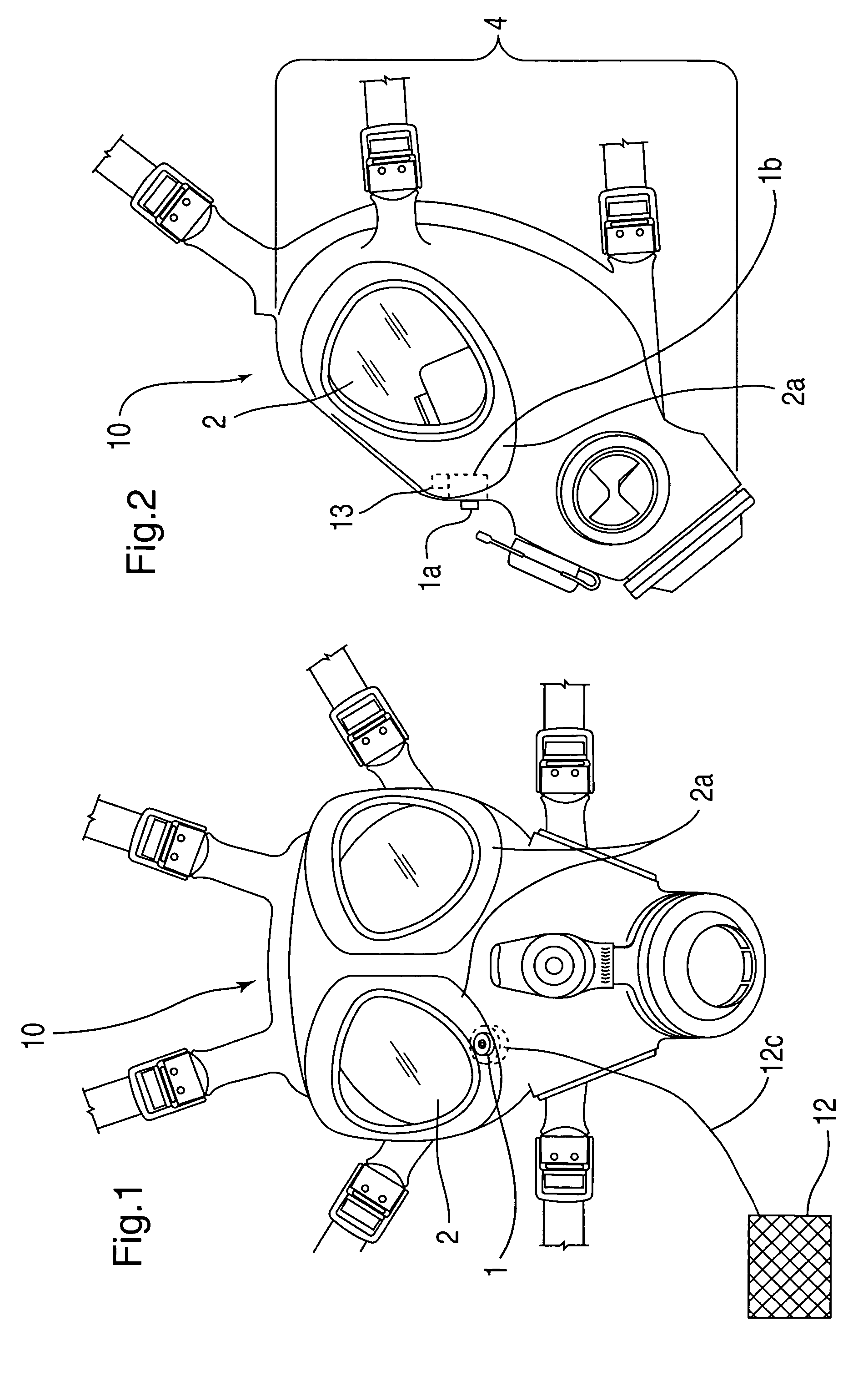Pressure indicator for positive pressure protection masks
a technology of pressure indicator and mask, which is applied in the direction of breathing mask, breathing filter, breathing protection, etc., can solve the problems of imperfect seal, serious and even fatal health risks to users, and toxins and materials that are hazardous to the respiratory system, and achieve the effect of easy detection
- Summary
- Abstract
- Description
- Claims
- Application Information
AI Technical Summary
Benefits of technology
Problems solved by technology
Method used
Image
Examples
Embodiment Construction
[0015]The present invention includes a pressure indicator system (referred interchangeably herein as a “pressure sensor,”“pressure indicator,”“sensor,” or “system”) for a positive pressure protection mask, such as, for example, a PAPR protection system. The present invention satisfies the unmet needs in the art by providing users with feedback and an alert during use of the mask about the safety of the protection mask, specifically whether the air pressure inside the mask is positive. Moreover, the present invention provides a pressure indicator system that detects and measures the air pressure in the internal space of the mask and subsequently informs the user of the measured air pressure.
[0016]In FIG. 1, in one embodiment of the invention, the mask 10 is equipped with lenses 2, through which the user sees from inside the mask 10. In this embodiment, at least one pressure indicator 1 is disposed at the base 2a of a corresponding lens 2. It should be noted that the pressure indicato...
PUM
 Login to View More
Login to View More Abstract
Description
Claims
Application Information
 Login to View More
Login to View More - R&D
- Intellectual Property
- Life Sciences
- Materials
- Tech Scout
- Unparalleled Data Quality
- Higher Quality Content
- 60% Fewer Hallucinations
Browse by: Latest US Patents, China's latest patents, Technical Efficacy Thesaurus, Application Domain, Technology Topic, Popular Technical Reports.
© 2025 PatSnap. All rights reserved.Legal|Privacy policy|Modern Slavery Act Transparency Statement|Sitemap|About US| Contact US: help@patsnap.com


